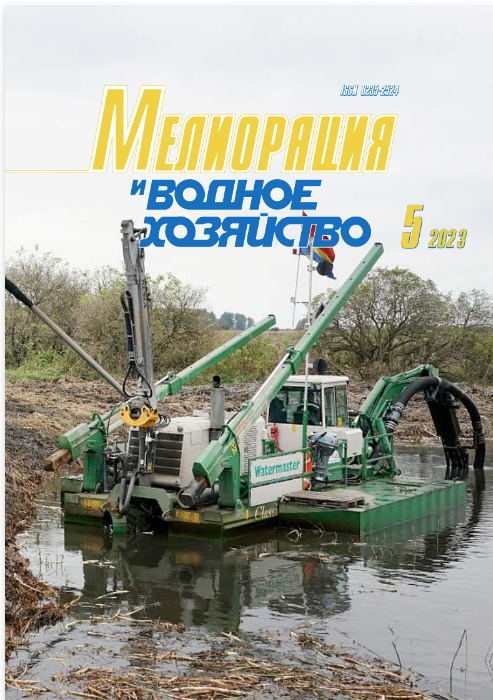Russian Federation
UDC 631.6
CSCSTI 68.31
Russian Classification of Professions by Education 35.06.01
Russian Library and Bibliographic Classification 4
Russian Trade and Bibliographic Classification 5607
BISAC TEC003000 Agriculture / General
In case of using geostatistics in agricultural sciences, the efficiency of agrotechnical management will be high; a relevant territory division might be interpreted as perspective task of optimal economical zoning using remote sensing. In a complex planning presumed the necessity of actions under undetermined climate change estimations and their circumstances for risks mitigation and governmental strategy, agrotechnical decisions adaptation for spatiotemporal inhomogeneity of agricultural lands to climate change. It appears, the future works for climate doctrine of Russian Federation actualization must be based on edifice of kriging marks with external driftage scientific climatic risks, led to practical using, and resulting adaptation agricultural measures in space-time continuum (D x T) considering global warming. Scientific key direction development carried out under Global Framework for Climate Services (GFCS) – it is a useful framework development for global warming knowledge integration into decision making processes (with using of methods climate risks estimations available for climatologist at Meteorological Service) and developing methodology must be interdisciplinary.
global warming, geostatistics, variogram analysis, kriging, melioration, structural function
1. Zakharyan Yu. G. Geostatistics: Climate change and agricultural technologies. M.: Science. 2022. 457 p.
2. Zakharyan Yu. G., Yanko Yu. G. Geostatistics in agricultural science taking into account global climate change in the strategy of planning agrotechnological solutions. // Modern problems of remote sensing of the Earth from space. 2022. T.19. No. 2. P.70-78.
3. Zakharyan Yu.G., Komarov A.A., Yanko Yu.G. : Assessment of differentiation of agricultural technologies according to three gradations taking into account global climate change, 2023. Vol. 20. No. 3. DOI:https://doi.org/10.21046/2070-7401-2023.20.3
4. Kiryushin V.I., Ivanov A.L. Agroecological assessment of land, design of adaptive landscape systems of agriculture and agricultural technologies. Methodical manual. M.: FGBNU Rosinformagrotekh. 2005. 784 p.
5. Lupyan E. A., Burtsev M. A., Proshin A. A., Kobets D. A. Development of approaches to the construction of information systems for remote monitoring. // Modern problems of remote sensing of the Earth from space. 2018. T. 15. No. 3. P. 53-66.
6. Yakushev V.P., Zakharyan Yu.G., Blokhina S.Yu. ...? , Modern problems of remote sensing of the Earth from space. 2022 T.?, N?, S.-?
7. Yakushev V.V. Precision farming: theory and practice. SPb.: FGBNU AFI. 2016. 364 p.
8. Gulyuk G.G., Yanko Yu.G., Shtykov V.I., Chernyak M.B., Petrushin A.F. Guide to field reclamation // St. Petersburg, 2020 - 219 p.
9. Isaacs E.H., Srivastava R.M. Applied Geostatistics. Oxford University Press, 1989. 592p.
10. Oliver M. A. Geostatistical applications for precision agriculture. UK: Springer Science & Business Media. 2010. 331 p.
11. Webster R., Oliver M., Geostatistics for environmental Scientists. John Willey and Sons, Chichetster, UK, 2007.









